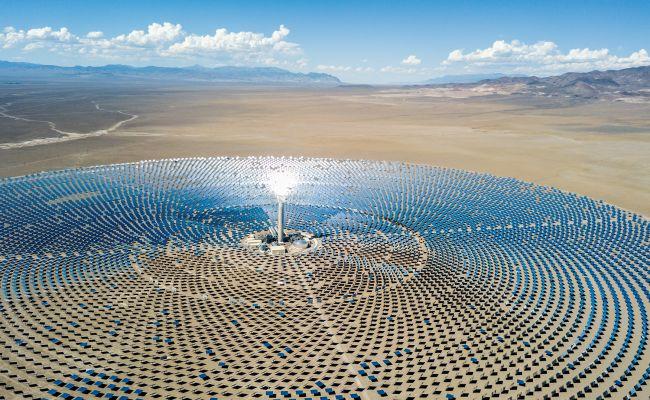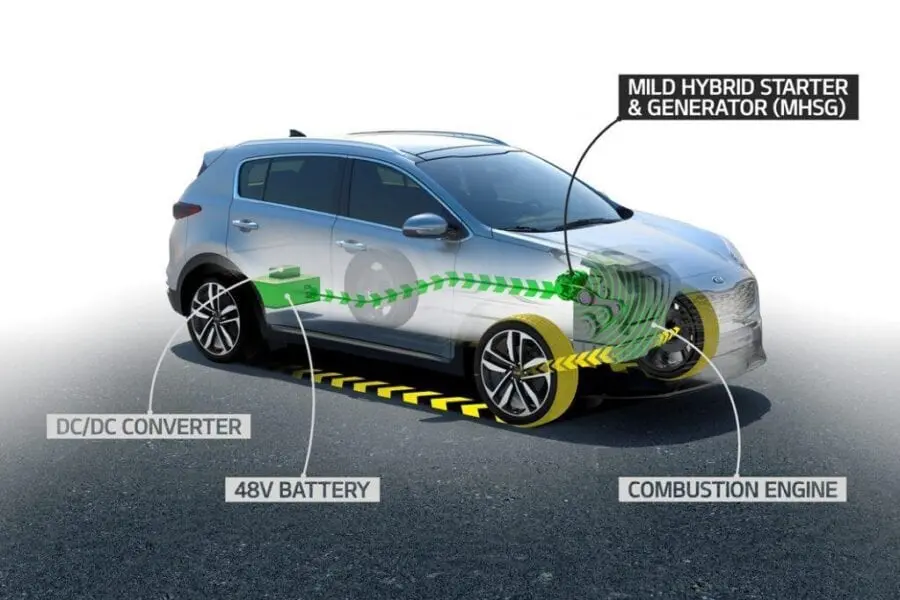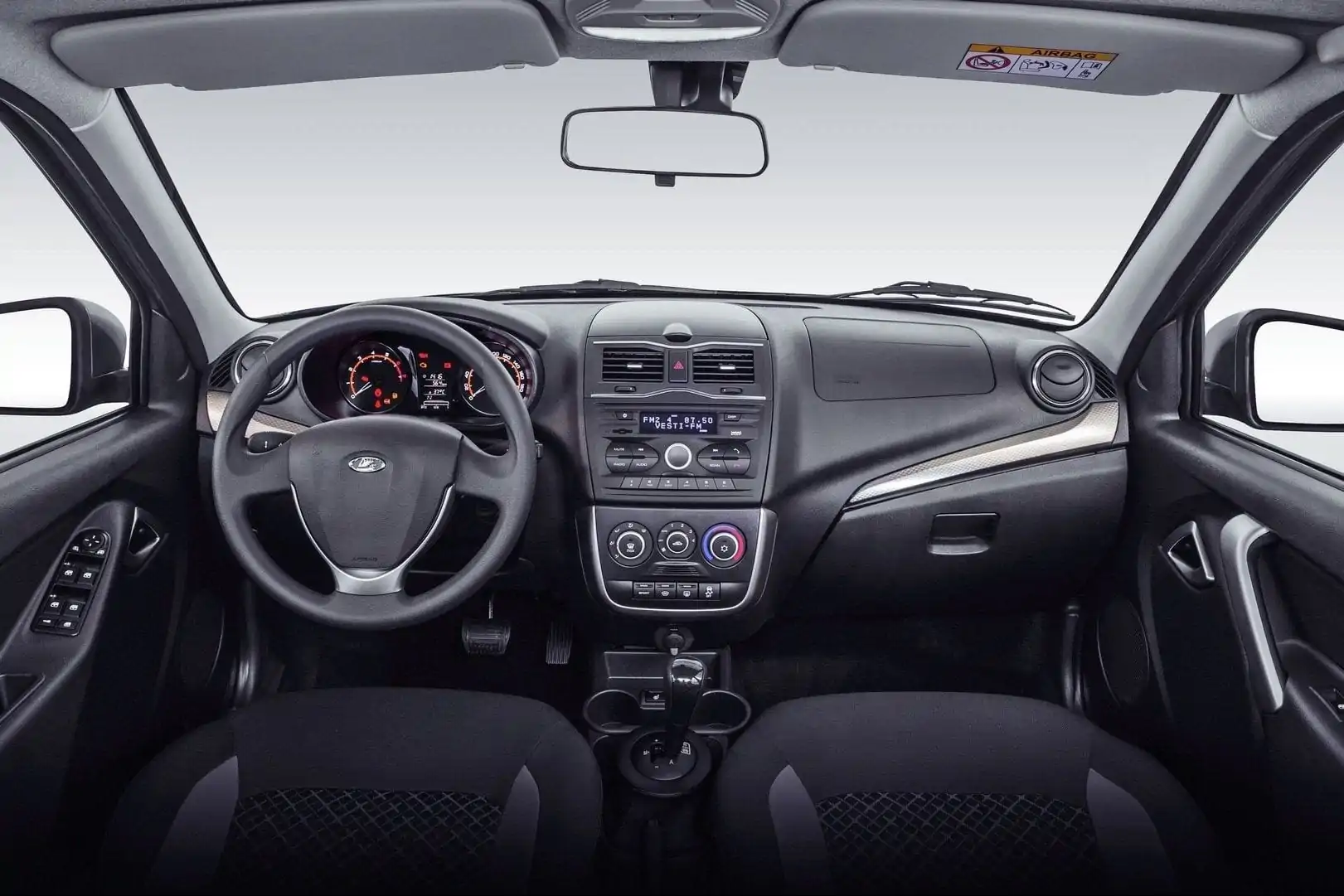
Warm climate for innovation. The fight against global warming develops technology
Climate change is one of the most frequently cited global threats. We can safely say that at present, almost everything that is being created, built, built and planned in developed countries takes into account the problem of global warming and greenhouse gas emissions on a large scale.
Probably, no one will deny that the publicity of the problem of climate change has led, among other things, to a strong impetus to the development of new technologies. We have written and will write many times about the next record of efficiency of solar panels, the improvement of wind turbines or the search for intelligent methods of storing and distributing energy from renewable sources.
According to the repeatedly cited Intergovernmental Panel on Climate Change (IPCC), we are dealing with a warming climate system, which is mainly caused by an increase in greenhouse gas emissions and an increase in the concentration of greenhouse gases in the atmosphere. Model results estimated by the IPCC suggest that to have a chance of limiting warming to less than 2°C, global emissions must peak before 2020 and then be maintained at 50-80% by 2050.
With zero emissions in my head
Technological advances driven by – let’s call it more broadly – “climate awareness” are, first, the emphasis on energy production and consumption efficiencybecause reducing energy use can have a significant impact on greenhouse gas emissions.
The second is the support of high potential, such as biofuels i wind energy.
Thirdly - research and technological innovationneeded to secure low-carbon options in the future.
The first imperative is development zero emission technology. If the technology cannot work without emissions, then at least the waste emitted must be a raw material for other processes (recycling). This is the technological motto of the ecological civilization on which we build our fight against global warming.
Today, the world economy is actually dependent on the automotive industry. Experts link their eco-hopes with this. Although it cannot be said that they are emission-free, they certainly do not emit exhaust gases in the place where they move. Controlling emissions in situ is considered easier and cheaper, even when it comes to burning fossil fuels. This is why a lot of money has been spent in recent years on innovation and the development of electric vehicles – also in Poland.
Of course, it is best that the second part of the system is also emission-free – the production of electricity that the car uses from the grid. However, this condition can be gradually fulfilled by switching the energy to . Therefore, an electric car traveling in Norway, where most of the electricity comes from hydroelectric power plants, is already close to zero emissions.
However, climate awareness goes deeper, for example in processes and materials for the production and recycling of tyres, car bodies or batteries. There is still room for improvement in these areas, but - as MT readers are well aware - the authors of technological and material innovations that we hear about almost every day have environmental requirements deeply rooted in their heads.
Construction of a 30-story modular building in China
They are just as important in economic and energy calculations as vehicles. our houses. According to the Commission on the Global Economy and Climate (GCEC) reports, buildings consume 32% of the world's energy and are responsible for 19% of greenhouse gas emissions. In addition, the construction sector accounts for 30-40% of the waste left in the world.
You can see how much the construction industry needs green innovation. One of them is, for example, the method of modular construction z prefabricated elements (although, frankly, this is an innovation that has been developed for decades). The methods that enabled the Broad Group to build a 30-story hotel in China in fifteen days (2), optimize production and reduce environmental impact. For example, almost 100% recycled steel is used in construction, and the production of 122 modules at the factory has significantly reduced the amount of construction waste.
Get more out of the sun
As last year's analyzes of British scientists from the University of Oxford showed, by 2027, up to 20% of the electricity consumed in the world may come from photovoltaic systems (3). Technological advances plus overcoming barriers to mass use mean that the cost of electricity generated in this way is dropping so rapidly that it will soon be cheaper than energy from conventional sources.
Since the 80s, photovoltaic panel prices have fallen by about 10% per year. Research is still ongoing to improve cell efficiency. One of the latest reports in this area is the achievement of scientists from the George Washington University, who managed to build a solar panel with an efficiency of 44,5%. The device uses photovoltaic concentrators (PVCs), in which lenses focus the sun's rays onto a cell with an area of less than 1 mm.2, and consists of several interconnected cells, which together capture almost all the energy from the spectrum of sunlight. Previously, incl. Sharp has been able to achieve over 40% efficiency in solar cells by using a similar technique, equipping the panels with Fresnel lenses that focus the light that hits the panel.
The sun is "caught" in the big city
Another idea for making solar panels more efficient is to split the sunlight before it hits the panels. The fact is that cells designed specifically for the perception of individual colors of the spectrum could more effectively "collect" photons. Scientists from the University of California Institute of Technology, who are working on this solution, hope to exceed the 50 percent efficiency threshold for solar panels.
Energy with a higher coefficient
In connection with the development of renewable energy sources, work is underway to develop the so-called. smart energy networks -. Renewable energy sources are distributed sources, i.e. unit power is usually less than 50 MW (maximum 100), installed near the final recipient of energy. However, with a sufficiently large number of sources dispersed over a small area of the power system, and thanks to the opportunities offered by networks, it becomes advantageous to combine these sources into one operator-controlled system, creating "virtual power plant ». Its goal is to concentrate distributed generation into one logically connected network, increasing the technical and economic efficiency of electricity generation. Distributed generation located in close proximity to energy consumers can also use local fuel resources, including biofuels and renewable energy, and even municipal waste.
This should play an important role in the creation of virtual power plants. energy storage, allowing power generation to be adapted to daily changes in consumer demand. Typically, such reservoirs are batteries or supercapacitors. Pumped storage power plants can play a similar role. Intensive work is underway to develop new technologies for storing energy, for example, in molten salt or using the electrolytic production of hydrogen.
Interestingly, American households consume the same amount of electricity today as they did in 2001. These are the data of local governments responsible for energy management, published at the turn of 2013 and 2014, reports the Associated Press. According to experts cited by the agency, this is mainly due to new technologies, savings and improving the energy efficiency of household appliances. According to the Home Appliance Manufacturers Association, the average energy consumption of air-conditioning appliances common in the US has dropped by as much as 2001% since 20. The power consumption of all household appliances has been reduced to the same extent, including TVs with LCD or LED displays that consume up to 80% less energy than old equipment!
One of the US government agencies prepared an analysis in which they compared various scenarios for the development of the energy balance of modern civilization. From this, predicting a high saturation of the economy with IT technologies, it followed that by 2030 only in the USA it was possible to reduce energy consumption by an amount equal to the electricity generated by thirty 600-megawatt power plants. Whether we attribute it to savings or, more generally, to the Earth's environment and climate, the balance is quite positive.

